Although the recently brokered Russian peace deal in Nagorno-Karabakh has led to the cessation of hostilities, the extensive use of drones has created some long lasting implications for the accessibility of airpower and future warfighting.
This opinion piece was submitted to the UK Defence Journal by Edward Davies. Edward is an MA graduate in International relations from the University of Leeds with special interests in Russia, China, AirPower and intelligence.
The most recent hostilities, which were originally sparked back in July, have seen drones taking on key roles as strike, ISR (intelligence, surveillance and reconnaissance) and fire control platforms on both sides. As the conflict escalated, graphic videos of drone strikes appeared online showing strikes on tanks, dug in position and soldiers of both sides. The cost of conflict has been high, although estimates of losses have been hard to confirm due to inflated claims from both Armenia and Azerbaijan. More accurate estimates place Armenian losses upwards of 185 tanks destroyed and Azerbaijan more than 30 with many of these losses inflicted by drones.
This impressive performance, coupled with the mass distribution of these shocking images online has led to some extensive debate surrounding the ‘unprecedented’ use of drones on this scale with some claiming they are set to transform the battlefields of the future. In particular, many have commented on the vulnerabilities of ground assets to attack from the air, especially tanks and armour, alongside the ability of drones to provide commanders with unparalleled battlefield awareness and improved targeting for artillery. This has led to some claims about the ‘end of the tank’ as an effective platform on the battlefield which has been accompanied by debate about the future of the main battle tank within the UK’s armed forces in anticipation of the now delayed Integrated Review.
However, these claims are misplaced. Not only because, as Robert Bateman points out, ‘bad training and terrain’ were key factors contributing toward the large number of losses of armour on both sides. But, more importantly, the effects drones were employed to deliver, attack and situational awareness, and the threat they pose to tanks and other assets is, in-fact, not new.
Since its inception, airpower has proved to be an indispensible capability to warfighters and a threat to assets on the ground. From the first rudimentary bombing raids over the trenches of the First World War to mass air raids in the Second World War and onto the first use of precision munitions during the First Gulf War. Through all these developments, the functions of airpower, control of the air, attack, intelligence and situational awareness and air mobility have remained largely the same since those early days, it is the platforms and technology used to generate these which have evolved. The threat air power has posed to dug-in positions and armour has remained consistent.
Whilst the use of drones is a well established practice in warfighting, they have thus far mostly been used in a limited capacity in asymmetric warfare by advanced state actors. This is as a result of the benefits of using drones provided in these specific situations, allowing a longer time over the target and preventing the use of more costly manned platforms in potentially dangerous areas. Conversely, there have also been some examples of the use of drones by non-state groups who do not possess traditional air forces, such as ISIS.
In this way, there are two novel factors about the use of drones in Nagorno-Karabakh; the heavy reliance on drones, as opposed to traditional air assets, to deliver a large proportion of airpower and their use in a peer on peer conflict against armour, not an asymmetric fight.
The use of drones by both Armenia and Azerbaijan, which possess only a limited number of legacy aircraft, represents the removal of both technological and cost barriers that are normally associated with the traditional means of delivering airpower. In this way, drones have acted as an enabler, facilitating the use of airpower by actors who would otherwise be prevented from generating, or have limited access to it at scale.
21st century fighter, attack and ISR aircraft require advanced technical and training infrastructure and take years for a country to develop as an effective capability at substantial cost. As a result of this, advanced, modern air forces capable of delivering effective strike and ISR capabilities have traditionally only been possessed by large state actors with smaller states being restricted to a smaller number of platforms with a much more limited scope in capability, often possessing older aircraft.
Therefore, the use of drones in the Nagorno-Karabakh conflict has demonstrated the ability to make some key components of airpower more accessible at scale to both state and non-state actors who lack the necessary financial and technical infrastructure to support advanced 21st century combat aircraft, or even older legacy aircraft in sufficient numbers. Platforms such as the Bayraktar TB2 acquired by Azerbijan from Turkey, and suicide drones such as the Harop, Skystriker and Orbiter 1K from Israel, have the ability to deliver payloads with devastating accuracy whilst requiring comparatively little training to traditional attack aircraft at a fraction of the cost.
Conversely, the use of drones in this way and on this scale has highlighted a new challenge for NATO. Whilst NATO air forces possess the relevant aircraft and weapons to shoot drones out of the sky, using advanced, combat aircraft to continuously project a protective bubble above ground forces that would be required to counter the threat posed by cheap, low flying drones is not only of questionable effectiveness but is also resource intense and unsustainable. In this way, the conflict has acutely illustrated the requirement for NATO forces to possess effective, integrated point air defence systems capable of countering the threats posed by drones. These must be capable of taking on a range of threats from loitering kamikaze and more advanced high flying drones to smaller low flying reconnaissance and grenade dropping quad-copters and suicide drones like the Chinese Parus S1.
However, within NATO and Western forces, the focus still very much remains on generating drone capabilities rather than counterting them. Recent developments which illustrate this are the use of drones by the Royal Navy in Cyprus and more advanced programmes such as the development of helicopter controlled drones by the US Army, recent trials of swarming drones by the RAF and the development of Boeing’s ‘loyal wingman’ in Australia. In order for this novel method of drone usage to be countered effectively, NATO forces will need to double down on their efforts to develop and integrate effective countermeasures at tactical level as they once again move towards large scale combined arms operations.
Whilst the vulnerability of ground forces to attack from the air is nothing new, the conflict has demonstrated how barriers to delivering attack and ISR capabilities at scale can be removed through the employment of drones, which represent a cheaper, more accessible medium as opposed to traditional platforms. In addition, it has also highlighted the need for new countermeasures to be integrated on a tactical level within NATO forces to effectively mitigate the employment of drones against large scale ground formations as witnessed in the Nagorno-Karabakh conflict.


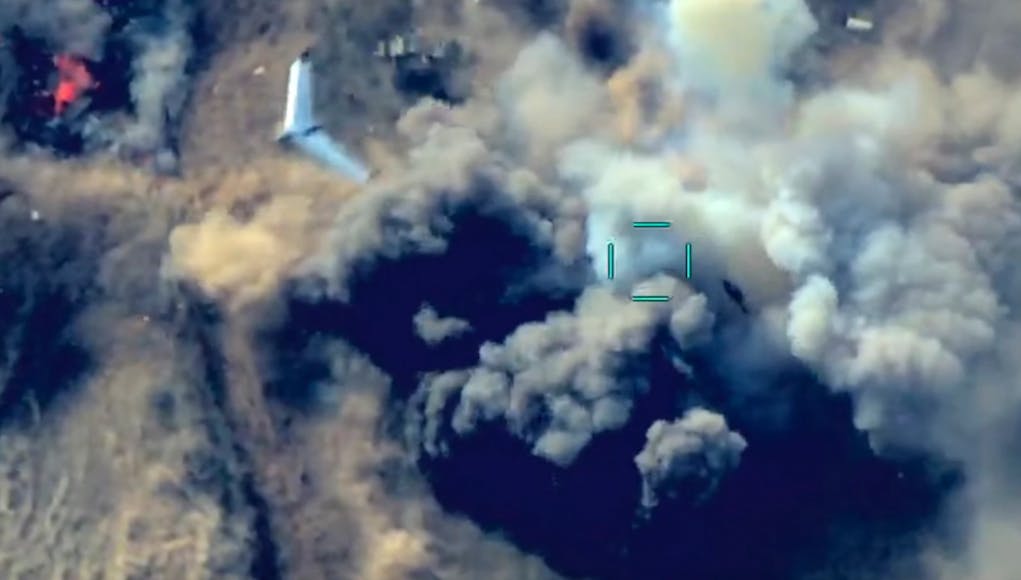
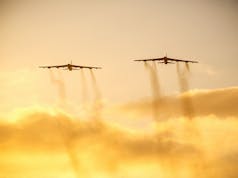
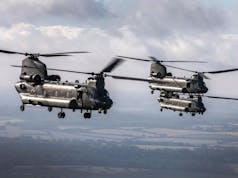
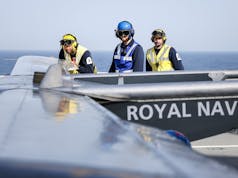
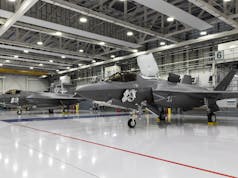
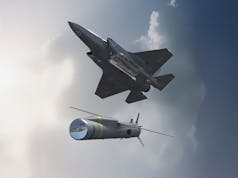

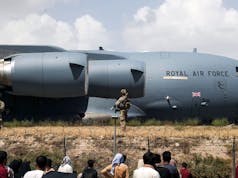
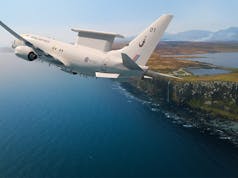
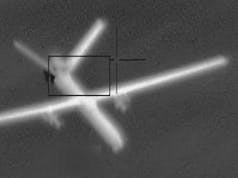
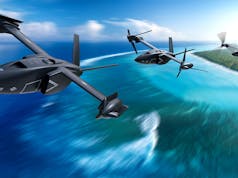

It’s the future, I believe that people are awake to this growing threat, Talk of reductions in Tanks might just become real. ( Only 6 Adverts on this thread ! ).
Yes, the attached link I think hints at this.
https://www.defensenews.com/global/europe/2020/12/11/british-defense-secretary-says-tough-choices-are-coming-due-on-spending/
I do think the UK should adopt drones and have long thought that each boxer should have 4 (quadcopter type drones) on the roof that take it in turns to provide advanced situational awareness.
It doesn’t have to be too fancy, we just need to get used to using them and start building them into our plans and inventory.
no doubt that drones are the future and the UK needs to become as innovative as Israel with some of its solutions.
Indeed, and have them in numbers as it will become a war of attrition. Turkey has over a hundred Bayraktar TB2.
No armoured formation or indeed strike brigades will be able to deploy without significant anti air/drone capabilities.
Ben Wallace’s comments on this area make me believe we will see significant investment in drones and anti-drone capabilities.
For Strike I think this just goes to show that each Strike Battalion will need a layered AAD element.
A strike force will need to be able to operate within its own bubble and to do that will need its own embedded AAD.
the other big thing about strike is I believe it needs 4 combat units instead of the usual 3 as it will need to provide 360 degree coverage with its support and HQ facilities in the centre.
We can no longer assume that there our rear is defended, each brigade should be able to fight its way out if surrounded and this will need precision fires, plenty of ATW’s and something far more relevant than the current planned armaments on our Boxers.
as a minimum our boxers should all have CT40’s, six ATW’s and 4 drones.
With an ever smaller military, every asset we field must be more lethal than our enemies or we will lose, it really is that simple.
Personally I think both our boxer and Ajax fleets should each have the Oerlikon Skyranger air defence system gun turret module option to provide air defence against drones, helicopters, etc! A far cheaper option and more useful agains swarmed drones than a missile system!
I’ve also thought we need other modules for both these platforms to enable overmatch with the AMOS mortar system and the spike NLOS system! Just my opinion
“as a minimum our boxers should all have CT40’s, six ATW’s and 4 drones”
That’s both grossly excessive and most likely ineffective. Turning all of our future APCs into light tanks isn’t going to counter the drone threat, what it’ll do is drive up costs and take away from their primary troop carrying role. I’m all for having some of Boxers configured this way, as Ajax lacks the strategic mobility to really support the strike brigades, but certainly not as a minimum spec for everything.
We already have the answer to small drones: active protection systems. They’ll need to be appropriate scaled up, but if they can stop anti-tank weapons they’re more than capable of stopping cheap suicide drones. There are also lasers, which will likely require dedicated carriers initially but in future will likely become small enough to be mounted in the same way as automatic machine gun turrrets are currently.
The latest US Abrams tanks are equipped with the Israeli Trophy APS system but the US Army considers it ineffective against the threat from small drones. This is how the US Army is approaching that problem.
Army to Use AI to Defeat Small Drones (nationaldefensemagazine.org)
Hence why I suggested existing systems would need to be scaled up. Trophy has proven incredibly effective against anti-tank missiles, I imagine the reason the US Army considers it insufficient to counter drones is because they can have a significantly different attack profile and signature than a missile. Still, I haven’t seen any evidence to suggest Trophy isn’t capable of stopping suicide drones.
That article doesn’t really provide anything substantial. All it really says is the US Army has identified a whole load of requirements for various air defence systems, and that they want to use AI to improve automated target detection and identification to aid personnel. Nothing on the sort of hardware they want.
I disagree on this one Callum
I think a Boxer should provide covering fire for its dismounts, as well as be far more effective in its ISR role.
Like most things now, every asset has to offer more than its intended role and for me Boxer is the perfect vehicle with appropriate offensive and defensive capabilities added to provide that.
We have to realise we don’t have the bodies, so we need to make up with other equipment.
The British Army has chosen CTA not me – I would be happy with a bushmaster on each of these, but we should make them far more punchier than they are going to be
At £6m each, I think adding £1m of offensive equipment is the right thing to do.
what we really need these to be is a base for 4-8 infantry that can take the weight off them and support them with suppressing fire.
Having every Miv kitted out the same means we have scale when we start losing some.
Its certainly expensive though, no getting around it, but it also gives strike some teeth
Critical mass is also more important than a few shiny toys. The more kit we want to stick on each vehicle, the fewer vehicles we’ll be able to afford. Given that Boxer is meant to be modular and it undoubtedly need to fill many different roles, having the base spec be far more heavily armed seems a poor choice.
In any case, how do any of your proposed upgrades help counter drones? The CTA is for ground effect, it’s not a an anti-aircraft gun unless we want to invest in adapting the naval mount, which could very well be unfeasible. ATGMs would certainly be a nice thing to have in general, but once again not helpful against drones. I do think having command vehicles carry several drones is a good shout, but putting them on every single vehicle as well as all your other upgrades seems like an impossible fit.
I agree we don’t need to arm every Boxer with CTA 40. However CTA 40 is very much designed to counter UAS/UAV, using anti-aerial airburst rounds per link below. Just need to add appropriate sensors if Boxer is not already fitted with them. IIRC Ajax and Warrior CSP turrets both support something like 70 degree barrel elevation as well which would help in targeting air threats.
https://www.cta-international.com/the-40-ctas/40-mm-ammunition/a3b-t/
Pac.
Under current plans they will have 4 “combat units”
2 battalions on Boxer and 2 Regiments on Ajax, 1 of which is meant to be in a “Medium Armour” role.
Replacing Tanks on the cheap in other words.
I’d not want to be in any of them personally…… I’ve seen my Son knock out entire Army’s on PS 5 from his Bedroom……
Dangerous place…a boy’s bedroom!
Every combat vehicle need to have anti drone capability with SAM manpads propose build with increased altitude ceiling to reach +20000ft.
Every vehicle with a cannon need to have the cannon able to fire in anti air capacity.
Land drones need to be build for most of logistics.
But the most important thing is to be able to detect the drones, either by other drones in fighter mission or by land mobile radars.
It would be great if we had an update from the powers that be on the future armed forces structure regarding drones
We need to see what the RN, RAF and Army have decided on type , role and numbers required.
It’s yet another area of defence that’s dragging its feet!
We dont need super fit bionic soldiers to fly drones. Its a gamers world like my self as someone who spends some times all day on a game
Use the gamers to create a Drone Network
Times are changing and certain the armed forces silly boundries much like recently aka “women” need to be broken
A room full of Call of Duty, World of Warcraft, and the Flight Sims gamers like myself, could and should become the Drone user of the future
The Esport UK v US Call of Duty event that just took place, brought armed forces personnel together to play.
As for Armenian and Azerbaijan conflict and others they are catching up, so are those the UK are seeing as the enemy
Im not sure Tanks are finished quite yet as their role in the British Army is still needed
New Tanks and vehicles could be fitted with anti drone technology
I was referring to the above report about the Tank losses though…….
Ben Wallace twice mentioned the game changing drone warfare Turkey has used in Syria Libya and Karabakh and took out Russian made air defence systems. They used drones to scout air defence systems then shared that data with artillery forces for precision strikes . Then used electronic warfare to blind the air defence and took them out using the the TB2 drones in swarm formation .
.
The EU warned most EU countries would be helpless against such drones other than Germany and France as most lack credible air defence systems
Turkey is developing the Akinci drone which has a 700km range and has SOM missiles with 300km range allowing them deep strikes beyond any NATO air defence range. They have developed autonomous patrol boats with anti ship missiles that work with drones in the sky armed with anti ship missiles all working in coordination with their frigates
Western Ukraine Donbas liberation could be next for Turkish drones as Ukraine plans to recapture it from russian separatist
OK, spoiler alert the Turkish TB2 drone was co-developed by Ukraine. It has seen a lot of action in the last four years, operating over Syria, Libya and Ukraine. It has had its issues, but by and large is quite a successful drone. It is about the same size as the Army’s Watchkeeper drone. But unlike Watchkeeper, it can be armed.
The three Israeli drones Harop, Skystriker and the Orbitor are all loitering munition types, though they can also be used for reconnaissance and target assessment.
What is perhaps most telling is that the Armenians had “direct” support from Russia, whilst Azerbaijan had help from Turkey. Russia has been fighting in both Syria and Ukraine, so it should know how to deal with drones. Perhaps their intelligence services failed to recognise what drones were being supplied to Azerbaijan?
A good example `of how tricky it is to deal with drones is with the Russian Pantsir system. When operating in Libya it has been pretty successful at taking out drones, whereas in Syria and now Armenia it has been found wanting. The Israelis in particular, have shown how easy it is to take out, through a combination of jamming and the use of the Harop suicide drone.
From a UK perspective we are long way behind. Yes, we issue small quadcopter and hummingbird drones to troops. But these are purely very short range reconnaissance drones. We do not have anything that can do what the Harop does for instance. The UK has a requirement for a loitering munition drone.
There have been a number of ways to combat drones from either kinetic weapons to electronic warfare. Ukraine has specifically updated both its old Shilkas and newer Tunguska SPAAGs to deal with drones. They use a combination of guided anti-air missiles and 23/30mm ammunition. Russia has not been idle either with their BMP3 derived 2S38 ZAK-57 Derivatsiya-PVO. This vehicle has also been specifically designed to combat drones. It uses a 57mm autocannon guided by passive IR and TV detection. They are developing a 57mm steerable and programmable munition to combat drones.
The Warrior/Ajax CTA 40mm cannon will be good for taking out drones, due to it further range and that the gun can elevate to +65 degrees. There is a anti-air munition. However, both vehicles will only have two ammo feeds, i.e. Multi-purpose HE and APFSDS. Either the HE round will need to be adapted for anti-air purposes or a third feed will need including.
So far a vehicle active protection system come generally ion two flavours. The first is like the Trophy system. which fires a wall of tungsten fragment in a missile’s path. The second is one that throws a high explosive munition towards the missile, such as Iron Fist, which then detonates in close proximity. It can either destroy the missile through the sheer concussion blast wave or deflect the missile out of the vehicle’s path. The Trophy style system has an effective range of about 50ft, whilst the Iron Fist style has much further effective range. Neither of these system are really good at combating drones unless they are within the effective range, i.e. bloody close.
Perhaps one of the easiest upgrades a vehicle could have, would be to use a RWS mounting a 0.50″ MG that has an effective range of at least 1 mile. There will be a need for a sensor system to detect a small drone or loitering munition. Which would be a tie up between a mmW radar and an imaging infrared (IIR) sensor. The mmW radar would have guaranteed all weather ability, but could be easily detected. Whilst the IIR sensor would be passive, but is more affected by the weather.
I could discuss electronic countermeasures, but that is whole different subject and would be close to spilling the beans!
Seems like we could designate some CTA 40 equipped vehicles (including Boxer) as SHORAD focused, while also equipped with SAM of choice for larger/more distant threats. Other vehicles can stay ground effect focused, with ATGM of choice.
I like the idea of utilising RWS with 0.50″ MG as it might be an affordable solution to enable a significant number of platforms but it may not be sufficient to counter swarm attacks versus using airburst rounds? I’m thinking of drone weapons like the Chinese launcher linked below.
https://www.forbes.com/sites/davidhambling/2020/10/14/china-releases-video-of-new-barrage-swarm-drone-launcher/?sh=55cf705f2ad7
As much as I’d prefer every infantry carrier version of boxer to be equipped with a CTA40, its’s not going to happen due to costs. The majority of Boxers will be getting a RWS with either a 7.62mm GPMG, 40mm GMG or a 0.50″ MG. The GMPG although an effective suppressing weapon, is not really suited to counter small UAVs/drones, whilst the 40mm GMG and 50 CAL are, as they either have a greater effective range or a greater terminal effect. The 40mm x 53mm grenade comes in a programmable fragmentary flavour, it unfortunately does not have a proximity fuse. But if it did, this could be a useful weapon against small drones. A standard 50 Cal ball round will do extensive damage to a small plastic drone/UAV. Where only a few rounds would be needed to bring one down or destroy it outright. Perhaps the RWS should mount both a 40mm GMG and a 50 Cal?
The issue would be developing a relatively cheap but accurate search and tracking sensor, that could be mounted on the RWS or the vehicle’s chassis. In some respects the Imaging Infrared (IIR) sensor would be the best compromise. As not only is it a passive system, but any bad weather that affects its ability to detect small UAVs, will also hinder their ability to fly and locate targets.
There will be a need for at least two independent sensors. One would need to be similar to the Starstreak’s Air Defence Alerting Device (ADAD) that provides a 360 degree search capability and secondly a coaxial FLIR/TV + laser range finder to track the small UAV/drone mounted alongside the weapon system. I think this is doable for a reasonably low cost, that could provide each RWS equipped vehicle with a loitering munition and UAV defence. Depending how accurate the RWS combination is, it might be able to provide a limited CIWS capability against air to ground missiles as well!
Agree that cost probably prevents fitting CTA40 everywhere we’d like. The key requirement IMO for an alternative UAS/UAV defence is in rapid and accurate targeting for alternatives like the 50 cal, since there may not be time in swarm attacks for the equivalent of spray and pray for direct hits for each threat. This gets a tougher proposition the faster drones fly and some can fly very fast.
“The UK has a requirement for a loitering munition drone.”
Could Fireshadow be resurrected?
Haven’t heard much, but at 200kg its a little large for the FEBA, the Yanks and the Israelis appear to have a multi layered approach and are investing in small handheld LM for grunts to carry and launch into battle
https://www.youtube.com/watch?v=YjFvYqJwaFA
I see what you mean.
We are clearly miles behind on this.
It’s funny but reading through thge comments made in the “Think Defence” forum about fire Shadow is abit haunting. The majority of people who made comments back in 2016 saw little purpose of a loitering munition, especially when we have GMLRS and Exactor. The main focus of the gripes was what if the munition doesn’t find a target, what then? The Isreali Harop has a return to base function, where it can land on a rough strip of land.
see this attached link for Think Defence Fire Shadow:
Fire Shadow Loitering Munition – Think Defence
Poland has been developing a licensed Oerlikon 35mm+Grom missile air defense weapon for many years. I presume this will be integrated into the Northrop Grumman Battle management system they have purchased (IBCS). Plan is to have it as a towed trailer, mounted on tracked or wheeled APC’s they have developed,
https://www.defence24.com/polish-35-mm-artillery-system-configuration-potential
The Dec issue of Airforces Monthly has a 6 page article on the above bunfight
Titled:
NAGORNO – KARABAKH
Remote controlled warfare has arrived.
Here is a small section from it:
First strikes
The Turkish made Baykar Defence Bairaktar TB2 armed medium altitude long endurance (MALE) drone played a key role in the early days of the offensive . Azerbaijani forces used it to deliver precise strikes against a significant number of Nagorno Karabakh defence forces (NKDF) mobile SAM systems on the front line. The principle weapon in these attacks was the Roketsan MAM-L 22kg laser guided bomb which has a range of of up to 8km (Extendable to 14km when using an INS/GPS package) The laser guided MAM-C was also used by the Bairaktar TB2 from a range of up to 8 km when dropped from high altitude.
The drones proved largely undetectable to the old generation radars of the SAM systems due to a relatively low radar cross section (RCS) allied to smart tactics and electronic jamming (created by ground based EW systems such as the Turkish made Aselsan KORAL)
Flying above 16000ft the Bairaktar TB2 dropped their laser guided bombs from a height beyond the reach of small calibre anti aircraft artillery (AAA) and shoulder launched SAMs.
The Turkish made drones also took out 2 Russian made Repellent -1 Truck mounted counter UAS systems (Combat video was released from both these strikes) delivered on September 30 and October 9 respectively) These systems had been deployed to create datalink jamming in order to disrupt drone operations so their failure was a serious blow to the NKDF anti drone capability. Their loss effectively allowed the Azerbaijan armed and surveillance drones to orbit undisturbed
The most common NKDF SAM system on the front line is the Soviet era 9K33 Osa-AKM (SA-8 Gecko) which is equipped with a search radar that works in the X band. This appears to have failed to have provided reliable detection of small and medium sized drones even at shorter distances. The OSA AKMs fielded by the NKDF are known to have undergone a minor upgrade by the Armenian defence industry with the addition of a new moving target selection capability and electro optical (EO) target tracking tracking system as well as better signal processing but the upgrades failed to endow the obsolete SAM system with an effective counter UAV capability.
The systematic and aggressive hunt for NKDF GBAD began on September 27 and saw the destruction of no fewer than 10 9K33 OSA AKW and 9 K35 Strela -10M2 (SA13 Gopher) systems plus at least one P-18 (Spoon rest D) 2D early warning radar in the first 4 days of the conflict As of Oct 23 the frontline air defences had lost as many as eight Osa AKM , three Strela -10M2 and one 1S32 krug (SA4 Ganef) SAM systems
In addition attacks were mounted against at least three Armenian S-300PS/PT-1 positions between Sept 29 and Oct 10. This saw the complete destruction of two ST-68U/UM target search radars, one 5P85S missile launcher unit and one 5N63S (NATO Flat Lid) targeting and missile guidance radar.
An S-125 Neva (NATO SA-3 Goa) was also neutralised by a Harop (Israeli loitering suicide drone) with video footage released by the Azerbaijan MOD
The formidable use of the Bairaktar TB2 to deliver a lethal impact with ease and impunity against the NKDF SAM systems suggests that the complex and dangerous DEAD operations was most likely conducted by Turkish crews with expertise gained in real world combat (Syria/Libya)
The wide use of antiquated Antonov AN-2 biplanes by the Azerbaijani forces especially in the first week of the conflict proved to be another innovation in is DEAD effort The NKDF released numerous combat videos showing white painted An-2 taking SAM hits on the frontline and displaying their wreckage on the ground. Initially it was baffling why these slow moving biplanes had been sent on suicide missions . But later it became clear that the An-2s locally converted into drones were being flown as decoys to trigger a reaction from the NKDF air defences . This allowed the Azerbaijan forces to pinpoint to position of SAM Systems
Tactical failings
Analysis of several combat videos released by the Azerbaijani MOD revealed a lack of any serious effort by NKDF targets to camouflage or conceal either their positions or heavy weapons. Most of the targets were easily identifiable from the air at long distances. The NKDF also proved ill-prepared to counter commonly used laser guided air and land launched munitions fired at its heavy weapons . There was little sign of even simple self protection equipment such as smoke grenades or laser warning systems (LWS)….The lack of LWS and smoke grenades -despite multiple indications that the Azerbaijani forces had purchased large quantities of laser guided weapons represents a huge oversight which has led to the loss of hundreds of NKDF MBTs, MLRS. SAMs, IFV and troops
Game Changer
The list of lessons learnt from this bloody and intense fought war should perhaps begin with the conclusion that todays UAS technology enables it wider and more effective use in a variety of of battlefield missions. However this game changing role is only possible after suppressing and destroying enemy air defences . It may have been a different story in Nagorno Karabakh if the Azerbaijan forces had faced a more potent defence than legacy GBAD.
It should also be noted that the Armenian MOD and NKDF leadership have committed a serious mistake by failing to recognise the importance of the Azerbaijani newly gained capability to wage high tech war. This massed use of of strike/ISR drones using laser guided munitions, complemented by a huge fleet of loitering munitions , land based cruise missiles. ballistic missiles (Israeli LORA missile) and rockets and the offensive tactics used in Nagorno Karabakh were borrowed from the combat hardened Turkish military. while the Armenians are waging yesterdays war
Very interesting take. If a Russian backed force can be so easily defeated with all the active service experience that Russia could lend its ally not to mention one might have thought considerable intelligence about what the Turks were supplying and supporting on the other side then this has perhaps been a vital wake up call to NATO and I suspect UK in particular. I am not aware of anything certainly in the initial stages that we would have or could do to have defended such a assault any or much better than the Armenians who after all have always been on the alert for such a strike even if they clearly under the Russian umbrella became complacent. The West generally is so tied into its technological superiority be it in manned or high end drone capabilities it has clearly dismissed the serious potential of by comparison less sophisticated aerial threats seeing them as a potential nuisance at this stage over being a serious game changer.
Hopefully some eyes have been opened here, as sophisticated air platforms could start to have less of an immediate influence on the ground war than far less ‘impressive’ (on paper) air threats. Scarily reminds me of the assumptions in the war against Japan when not only was the opposition deemed inferior and ineffectual as a fighting force as was that of Azerbaijan, but the mighty capabilities of the humble bike to effect the ground war to outflank the static defences and make supposedly superior traditional forces and weapons tactically obsolete was totally unsuspected by traditional planners till too late.
I think our Starstreak LML and Stormers would do reasonably well against loitering munitions and small drones. As the Air Defence Alerting Device (ADAD) has a very good resolution against small low thermal signature targets. The issue we would face is do we have enough replacement Starstreaks available at short notice that could replenish the ones fired?
The use of the An2s is genius. I believe, something like that was used in a WW3 novel. Whereby those dastardly Russians fooled NATO into using up all of its air to air missiles in the first couple of days. It was done by using old and near worn out cold war era aircraft, such as Mig 23/27s and Su 22s attacking in massed waves. Pretty much sacrificial bait to use up the more up to date air to air missiles. Thus rendering NATO aircraft weapon less against the more modern Russian aircraft.
A missile such as ASRAAM, AMRRAM or Meteor will have no problems tracking a small UAV such as the TB2 or the loitering munition such as the Harop. But do you really want to waste a multi-million pound missile against such a target? For these types of target the aircraft can use its autocannon. but that in itself will be tricky as the closure speed will be huge between the two. Even with help from the radar and laser range finder against such a small and slow moving target. What would be needed is a cheaper missile alternative.
A UAV such as TB2 has a top sped of 120mph. It does not currently have any radar, laser or missile warning system, thus it is effectively blind to attack. There has been a development in a weapon system that may fit the requirement. This is the precision guided air to ground rocket, especially the BAe advanced precision kill weapon system (APKWS). This has already been successfully tested against drones and can either be air or ground launched. If this system was installed on a a hunter-killer drone that was tasked with protecting ground forces or targets of high value, this would add another layer to the defence umbrella. Especially as they could stay airborne for greater than 8 hours at a time.
Davey,
I agree fully, I kept an eye on troop movements in Libya and noticed that the LNA Chinese Wingloon UAVs kept well away from where the Turks positioned their frigates. On the other side of the coin 2 Pantsir in use by the LNA managed to down 23 Turkish drones this year from January to August. (Including one of their latest Anka UAV) that thorn in their side lead the Turks to hunt those systems and they did, in one case a social media of a photo from inside a building was recognised and the Turks bombed the building.
In Syria, after the initial shock (And the lack of AAA from the Syrians) The Turks have lost a number of UAVs primarily due to the Syrians not using their radars and instead resorting to optical tracking .
Dont get me wrong I am not shooting down what the Turks have achieved, but to be fair they have faced 3 third world millilitres with no air cover.
Regards your point about the speed of the TB2. the Israelis shot an Iranian drone down in 2018 (A so called stealth drone) via the use of an Hellfire fired from an Apache
https://www.youtube.com/watch?v=E0Jt_Vy4Mj0
“The use of the An2s is genius.”
There is nothing new about that. Israeli Delilah, several US systems were employed in combat in Iran either in 1991 and 2003.
“I think our Starstreak LML and Stormers would do reasonably well against loitering munitions and small drones.”
What is the ceiling of those. TB2 goes at 16000ft.
Apologies, i meant Iraq, not Iran.
That’s around the published ceiling for Starstreak.
The reason I said it was genius is that they had a large number of An2s basically doing nothing. So rather than let them sit around gathering dust, they turned them into unmanned drones. Because it has a large radar signature, it won’t be ignored by the older Russian air defence radars.
Ok, i would call it smart not at genius level.
Fair one!
https://en.wikipedia.org/wiki/Operation_Mole_Cricket_19
Use of drones in an anti air defense mission, but only for reconnaissance and decoy. At the time they were called RPV’s. Note how the drones could survey the missiles sites and airfields without being downed.
Can imagine that Greece and Greek Cyprus will be considering a range of urgent operational enhancements.
Wonder to what extent wedgetail can track the spectrum of drones involved.
Pete,
Between 1997-1998 Turkey went up the wall after Cyprus purchased a S300 battery in response to Turkish fighter aircraft entering Cypriot air space.
They started stopping and searching ships heading to Cyprus, they sent planes to Israel to be trained on how to take out the S300, They threatened war.
Russia and Greek stated they would back Cyprus if they did, In the end a compromise was made Cyprus offloaded the S300 to Greece who placed it on Crete (Still there) and in return they handed over 6 TOR AAA systems to Cyprus. From what I can gather whilst short range, the TOR is more than capable to take out the Turkish UAVs. But as you stated they both will have taken note (As have a lot of others) and will be taking steps to mitigate the Turkish UAV problem. On that note, Ive read a few of the posts above regards the Brits fixing heavy weapons onto its armour in which to fo likewise. yet not one has mentioned Starstreak or its successor the lightweight multi-role missile, we also have rapier both of which come fitted with optical sights with laser targeting (I can only presume that thermal is fitted as standard) combine that with the giraffe radar system the RA uses (funny so does Greece)
https://www.saab.com/products/giraffe-amb
add the ship borne Aster family of missiles , its land based Typhoon and F35 as top cover
and think we can say the UK has the means to defend itself against UAvS In a war time setting a lot better than the Armenians, Syrians and libyans
Indeed farouk. Somehow its the ability to get giraffe integrated into a network of alternate munitions from LRLM to camm such that it can select the right kill solution for the threat identified.
Having a range of modular kill solutions spread through the Boxer and Ajax fleets will also be critical.
The Starstreak’s Air Defence Alerting Device (ADAD) is based upon the Typhoon’s PIRATE Infrared Search and Track (FLIR/IRST) made by the consortium Eurofist (Leonardo. Thales UK and Technobit). Pirate is due an upgrade in the next year or so. Both the ADA and Pirate have a very high contrast ratio. Against a fighter sized target it is supposed to have a range greater than 50nm (depending on the weather). Against a much smaller target it will be closer. So long as the detection range is better than the Starstreak’s maximum effective range, means targets can be engaged at the edge of Starstreak’s envelop.
Technically without laser ranging a passive IR system will not be able to give you range information. However, if a sensor were mounted to a pair of vehicles at a set distance apart, linked through a datalink. The range can be worked out using trigonometry, as the sensor can work out the bearing to the target relative to its fixed position.
If we have the right electronic surveillance equipment and can detect the UAVs control frequency, it will be relatively easy to jam that frequency with a high power white noise signal. Hopefully putting the UAV into a default safety mode, where it either flies in circles waiting for the control signal to reappear or flies back to a safe position to re-establish communications. That does fall into the realms of electronic counter-counter measures (ECCM), where you attack the jammer with a homing missile etc. The kinetic kill is still the best option.
Davey,
Thanks for the info. Answered a raft of questions for me.
The Turks took on the Russians in Syria and blocked their agenda to allow Assad to take full control. They took on Russia In Libya southern Europe backyard to support the UN backed government and stopped the renegade General backed and armed by Russia to take control of the capital and west of the country . And now are in Russian backyard in Azerbaijan defeating Russian military gear again. I can’t think of any NATO member that took on the Russians like this since the cold war even .
The TB2 drone is now most battle proven drone and cheap force multiplier, and soon it’s successor the TB3 will be released and the long range Akinci that can attack beyond air defence range will be online next year too. Electronic Warfare used played a major role blinding russian radars which is often overlooked.
The Turkish infantry now is armed with remote controlled and autonomous surveillance and attack drones that are launched from armoured vehicles . In Libya they used a laser mounted on a vehicle to shoot down a chines made drone.
We should not underestimate the battlefield changes taking place and should take notes and adopt the best practices to prepare our forces for any challenge
The delays in upgrading Warrior and C2 might be a blessing in disguise. We now have time to feed our appraisal of the Turkish use of drones in Syria and Azerbaijan into the defence review. As they say, every cloud has a silver lining.
With all the money wasted so far I can’t see us going back to the drawing board and redesigning the Warrior and Challenger upgrades so they will be carried on as normal I reckon!
However Integrating anti-drone on to the Boxer, AJAX or other vehicle types will have to be considered if not implemented in the near future for the strike brigades
It will be interesting to see what influence the recent use of drones has!